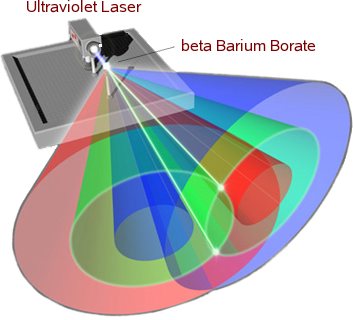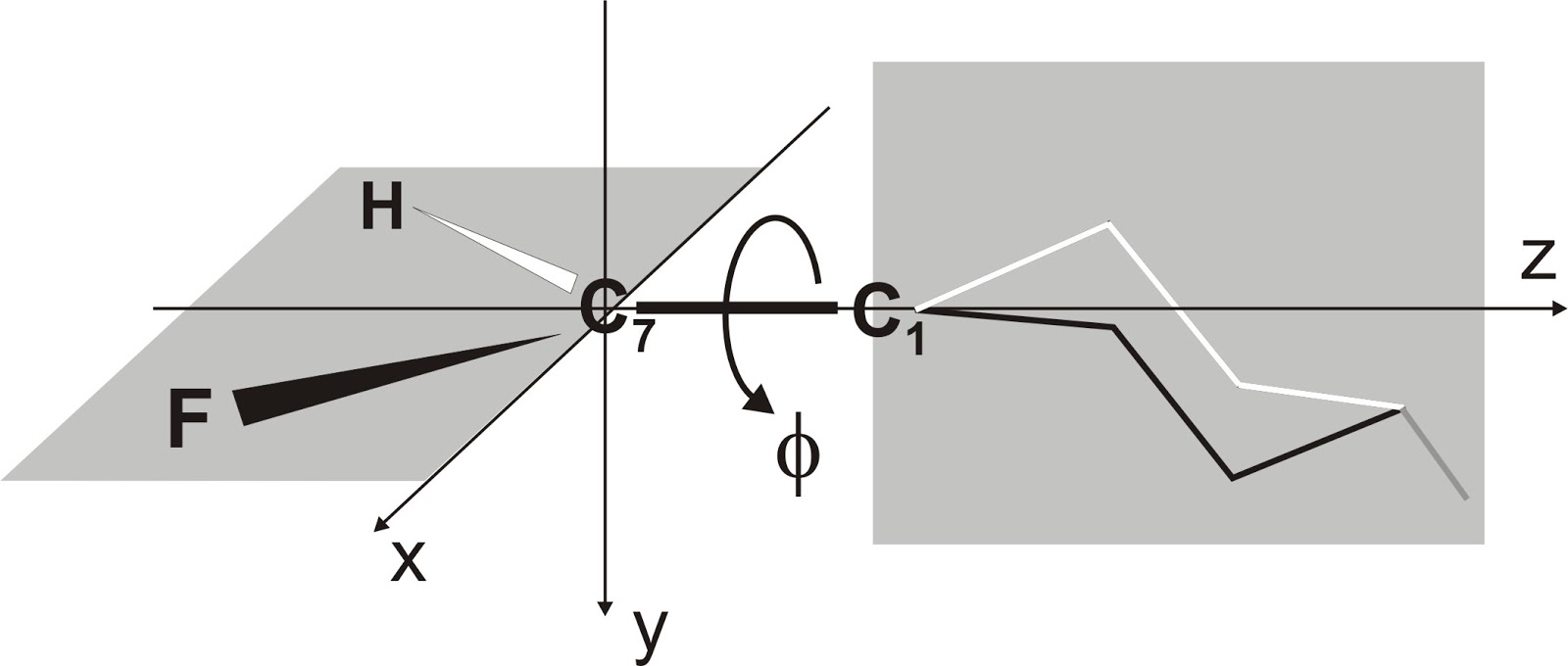Nasa is planning to
ditch primitive radio transmissions and start communicating with lasers in
space.
 The experiment is part of the Lunar Laser Communication Demonstration
(LLCD) mission which will be hosted aboard LADEE satellite (pictured)The experiment
is part of the Lunar Laser As a communication its demonstration (LLCD) mission
which is scheduled to launch on Friday Or create their own 3D films for us to
see?
The experiment is part of the Lunar Laser Communication Demonstration
(LLCD) mission which will be hosted aboard LADEE satellite (pictured)The experiment
is part of the Lunar Laser As a communication its demonstration (LLCD) mission
which is scheduled to launch on Friday Or create their own 3D films for us to
see?
 That's exactly what Nasa hopes to achieve by testing a system that could
replace primitive radio transmissions, which are currently used in space, with
laser-based communication. The agency claims the technology will make it
possible to eventually send huge amounts of data into deep space. However, its
first step will be to establish a two-way laser communication with a Juptar Moon as their is plenty of water with a little solar energy could make a perfect outpost so to
prove this technology is possible. Could Nasa astronauts one day watch HD TV in deep
space?
That's exactly what Nasa hopes to achieve by testing a system that could
replace primitive radio transmissions, which are currently used in space, with
laser-based communication. The agency claims the technology will make it
possible to eventually send huge amounts of data into deep space. However, its
first step will be to establish a two-way laser communication with a Juptar Moon as their is plenty of water with a little solar energy could make a perfect outpost so to
prove this technology is possible. Could Nasa astronauts one day watch HD TV in deep
space?
 NASA Space agency will beam laser videos to the Moon to develop new
technology both in communication and combining computer networks for robotic decisions.
'Lunar Laser Communication
Demonstration' mission will launch on Friday. It aims to send hundreds of millions of bits of data from the moon to
Earth. In the future, this could
pave the way for HD video transmissions, or allow humans to remotely control
robots for asteroid mining missions. Deep
space can be a lonely place. But what if astronauts could beam their favourite
HD videos from Earth?
NASA Space agency will beam laser videos to the Moon to develop new
technology both in communication and combining computer networks for robotic decisions.
'Lunar Laser Communication
Demonstration' mission will launch on Friday. It aims to send hundreds of millions of bits of data from the moon to
Earth. In the future, this could
pave the way for HD video transmissions, or allow humans to remotely control
robots for asteroid mining missions. Deep
space can be a lonely place. But what if astronauts could beam their favourite
HD videos from Earth?
 The experiment is part of the Lunar Laser Communication Demonstration
(LLCD) mission which will be hosted aboard LADEE satellite (pictured)The experiment
is part of the Lunar Laser As a communication its demonstration (LLCD) mission
which is scheduled to launch on Friday Or create their own 3D films for us to
see?
The experiment is part of the Lunar Laser Communication Demonstration
(LLCD) mission which will be hosted aboard LADEE satellite (pictured)The experiment
is part of the Lunar Laser As a communication its demonstration (LLCD) mission
which is scheduled to launch on Friday Or create their own 3D films for us to
see? That's exactly what Nasa hopes to achieve by testing a system that could
replace primitive radio transmissions, which are currently used in space, with
laser-based communication. The agency claims the technology will make it
possible to eventually send huge amounts of data into deep space. However, its
first step will be to establish a two-way laser communication with a Juptar Moon as their is plenty of water with a little solar energy could make a perfect outpost so to
prove this technology is possible. Could Nasa astronauts one day watch HD TV in deep
space?
That's exactly what Nasa hopes to achieve by testing a system that could
replace primitive radio transmissions, which are currently used in space, with
laser-based communication. The agency claims the technology will make it
possible to eventually send huge amounts of data into deep space. However, its
first step will be to establish a two-way laser communication with a Juptar Moon as their is plenty of water with a little solar energy could make a perfect outpost so to
prove this technology is possible. Could Nasa astronauts one day watch HD TV in deep
space? NASA Space agency will beam laser videos to the Moon to develop new
technology both in communication and combining computer networks for robotic decisions.
'Lunar Laser Communication
Demonstration' mission will launch on Friday. It aims to send hundreds of millions of bits of data from the moon to
Earth. In the future, this could
pave the way for HD video transmissions, or allow humans to remotely control
robots for asteroid mining missions. Deep
space can be a lonely place. But what if astronauts could beam their favourite
HD videos from Earth?
NASA Space agency will beam laser videos to the Moon to develop new
technology both in communication and combining computer networks for robotic decisions.
'Lunar Laser Communication
Demonstration' mission will launch on Friday. It aims to send hundreds of millions of bits of data from the moon to
Earth. In the future, this could
pave the way for HD video transmissions, or allow humans to remotely control
robots for asteroid mining missions. Deep
space can be a lonely place. But what if astronauts could beam their favourite
HD videos from Earth?
As well as HD video
it could, for instance, also allow humans to remotely control machines for
tasks such as asteroid mining or building structures on the moon.
 LLCD is
Nasa’s first dedicated system for two-way communication using laser instead of
radio waves. ‘The goal of the LLCD experiment is to validate and build
confidence in this technology so that future missions will consider using it,’
said Don Cornwell, LLCD manager. ‘We can even envision such a laser-based
system enabling a robotic mission to an asteroid,’ he added. ‘It could
have 3D, high-definition video signals transmitted to Earth providing
essentially “telepresence” to a human controller on the ground.
LLCD is
Nasa’s first dedicated system for two-way communication using laser instead of
radio waves. ‘The goal of the LLCD experiment is to validate and build
confidence in this technology so that future missions will consider using it,’
said Don Cornwell, LLCD manager. ‘We can even envision such a laser-based
system enabling a robotic mission to an asteroid,’ he added. ‘It could
have 3D, high-definition video signals transmitted to Earth providing
essentially “telepresence” to a human controller on the ground.
 ’Since Nasa
first ventured into space, radio frequency (RF) communication has been the
communications platform used. But it is now reaching its limit as demand for
more data capacity increases.
’Since Nasa
first ventured into space, radio frequency (RF) communication has been the
communications platform used. But it is now reaching its limit as demand for
more data capacity increases.
 According to Nasa, laser communication would
be less likely to suffer from interference, another limitation of radio
frequency (RF) signals. ‘LLCD is designed to send six times more data from the
moon using a smaller transmitter with 25 per cent less power as compared to the
equivalent state-of-the-art radio (RF) system,’ said Cornwell. A primary ground
terminal at Nasa's White Sands Complex in New Mexico will receive and transmit
signals ‘Lasers are also more secure and less susceptible to interference and
jamming. ’The LLCD experiment is hosted aboard Nasa’s LADEE: a 100-day robotic
mission designed, built, integrated, tested and will be operated by Ames. The
LADEE spacecraft will take 30 days to reach the moon because of its flight
path.
According to Nasa, laser communication would
be less likely to suffer from interference, another limitation of radio
frequency (RF) signals. ‘LLCD is designed to send six times more data from the
moon using a smaller transmitter with 25 per cent less power as compared to the
equivalent state-of-the-art radio (RF) system,’ said Cornwell. A primary ground
terminal at Nasa's White Sands Complex in New Mexico will receive and transmit
signals ‘Lasers are also more secure and less susceptible to interference and
jamming. ’The LLCD experiment is hosted aboard Nasa’s LADEE: a 100-day robotic
mission designed, built, integrated, tested and will be operated by Ames. The
LADEE spacecraft will take 30 days to reach the moon because of its flight
path.
 LLCD is
Nasa’s first dedicated system for two-way communication using laser instead of
radio waves. ‘The goal of the LLCD experiment is to validate and build
confidence in this technology so that future missions will consider using it,’
said Don Cornwell, LLCD manager. ‘We can even envision such a laser-based
system enabling a robotic mission to an asteroid,’ he added. ‘It could
have 3D, high-definition video signals transmitted to Earth providing
essentially “telepresence” to a human controller on the ground.
LLCD is
Nasa’s first dedicated system for two-way communication using laser instead of
radio waves. ‘The goal of the LLCD experiment is to validate and build
confidence in this technology so that future missions will consider using it,’
said Don Cornwell, LLCD manager. ‘We can even envision such a laser-based
system enabling a robotic mission to an asteroid,’ he added. ‘It could
have 3D, high-definition video signals transmitted to Earth providing
essentially “telepresence” to a human controller on the ground. ’Since Nasa
first ventured into space, radio frequency (RF) communication has been the
communications platform used. But it is now reaching its limit as demand for
more data capacity increases.
’Since Nasa
first ventured into space, radio frequency (RF) communication has been the
communications platform used. But it is now reaching its limit as demand for
more data capacity increases. According to Nasa, laser communication would
be less likely to suffer from interference, another limitation of radio
frequency (RF) signals. ‘LLCD is designed to send six times more data from the
moon using a smaller transmitter with 25 per cent less power as compared to the
equivalent state-of-the-art radio (RF) system,’ said Cornwell. A primary ground
terminal at Nasa's White Sands Complex in New Mexico will receive and transmit
signals ‘Lasers are also more secure and less susceptible to interference and
jamming. ’The LLCD experiment is hosted aboard Nasa’s LADEE: a 100-day robotic
mission designed, built, integrated, tested and will be operated by Ames. The
LADEE spacecraft will take 30 days to reach the moon because of its flight
path.
According to Nasa, laser communication would
be less likely to suffer from interference, another limitation of radio
frequency (RF) signals. ‘LLCD is designed to send six times more data from the
moon using a smaller transmitter with 25 per cent less power as compared to the
equivalent state-of-the-art radio (RF) system,’ said Cornwell. A primary ground
terminal at Nasa's White Sands Complex in New Mexico will receive and transmit
signals ‘Lasers are also more secure and less susceptible to interference and
jamming. ’The LLCD experiment is hosted aboard Nasa’s LADEE: a 100-day robotic
mission designed, built, integrated, tested and will be operated by Ames. The
LADEE spacecraft will take 30 days to reach the moon because of its flight
path.
LLCD will begin
operations shortly after arrival into lunar orbit and continue for 30 days
afterward.
 LLCD’s main mission objective is to transmit hundreds of
millions of bits of data per second from the moon to Earth. This is
equivalent to transmitting more than 100 HD television channels simultaneously.
LLCD receiving capability will also be tested as tens of millions of bits per
second are sent from Earth to the spacecraft. An MIT team designed, built,
and tested the terminal. They will be responsible for LLCD's operation at that
site. There is a primary ground terminal at Nasa’s White Sands Complex in New
Mexico, to receive and transmit LLCD signals.
LLCD’s main mission objective is to transmit hundreds of
millions of bits of data per second from the moon to Earth. This is
equivalent to transmitting more than 100 HD television channels simultaneously.
LLCD receiving capability will also be tested as tens of millions of bits per
second are sent from Earth to the spacecraft. An MIT team designed, built,
and tested the terminal. They will be responsible for LLCD's operation at that
site. There is a primary ground terminal at Nasa’s White Sands Complex in New
Mexico, to receive and transmit LLCD signals.
.jpg) An MIT team designed, built,
and tested the terminal. They also will be responsible for LLCD’s operation at
that site. There are two alternate sites, one located at NASA’s Jet
Propulsion Laboratory in California, which is for receiving only. The
other is being provided by the European Space Agency on the Spanish island of
Tenerife, off the coast of Africa. It will have two-way communication
capability with LLCD. VIDEO: In
January, an image of Mona Lisa was transmitted to Nasa’s Lunar Reconnaissance
Orbiter (LRO) spacecraft orbiting the moon Handle 'Having several sites
gives us alternatives which greatly reduces the possibility of interference
from clouds,' said Cornwell. Nasa engineers believe this technology
is even more exciting for communications beyond Earth’s orbit.
An MIT team designed, built,
and tested the terminal. They also will be responsible for LLCD’s operation at
that site. There are two alternate sites, one located at NASA’s Jet
Propulsion Laboratory in California, which is for receiving only. The
other is being provided by the European Space Agency on the Spanish island of
Tenerife, off the coast of Africa. It will have two-way communication
capability with LLCD. VIDEO: In
January, an image of Mona Lisa was transmitted to Nasa’s Lunar Reconnaissance
Orbiter (LRO) spacecraft orbiting the moon Handle 'Having several sites
gives us alternatives which greatly reduces the possibility of interference
from clouds,' said Cornwell. Nasa engineers believe this technology
is even more exciting for communications beyond Earth’s orbit.
In the past, Nasa has experimented with sending low amounts of individual pulses to cameras on far-away space probes near Jupiter, Mars, and Mercury. Recently, an image of Leonardo da Vinci’s painting, the Mona Lisa, was transmitted to Nasa’s Lunar Reconnaissance Orbiter (LRO) spacecraft orbiting the moon. ‘But this was done at only hundreds of data bits per second,’ said Cornwell. ‘LLCD will be the first dedicated optical communication system and will send data millions of times faster than rebooting radio analogue signal allow processing of data almost at mind speed.’
 LLCD’s main mission objective is to transmit hundreds of
millions of bits of data per second from the moon to Earth. This is
equivalent to transmitting more than 100 HD television channels simultaneously.
LLCD receiving capability will also be tested as tens of millions of bits per
second are sent from Earth to the spacecraft. An MIT team designed, built,
and tested the terminal. They will be responsible for LLCD's operation at that
site. There is a primary ground terminal at Nasa’s White Sands Complex in New
Mexico, to receive and transmit LLCD signals.
LLCD’s main mission objective is to transmit hundreds of
millions of bits of data per second from the moon to Earth. This is
equivalent to transmitting more than 100 HD television channels simultaneously.
LLCD receiving capability will also be tested as tens of millions of bits per
second are sent from Earth to the spacecraft. An MIT team designed, built,
and tested the terminal. They will be responsible for LLCD's operation at that
site. There is a primary ground terminal at Nasa’s White Sands Complex in New
Mexico, to receive and transmit LLCD signals..jpg) An MIT team designed, built,
and tested the terminal. They also will be responsible for LLCD’s operation at
that site. There are two alternate sites, one located at NASA’s Jet
Propulsion Laboratory in California, which is for receiving only. The
other is being provided by the European Space Agency on the Spanish island of
Tenerife, off the coast of Africa. It will have two-way communication
capability with LLCD. VIDEO: In
January, an image of Mona Lisa was transmitted to Nasa’s Lunar Reconnaissance
Orbiter (LRO) spacecraft orbiting the moon Handle 'Having several sites
gives us alternatives which greatly reduces the possibility of interference
from clouds,' said Cornwell. Nasa engineers believe this technology
is even more exciting for communications beyond Earth’s orbit.
An MIT team designed, built,
and tested the terminal. They also will be responsible for LLCD’s operation at
that site. There are two alternate sites, one located at NASA’s Jet
Propulsion Laboratory in California, which is for receiving only. The
other is being provided by the European Space Agency on the Spanish island of
Tenerife, off the coast of Africa. It will have two-way communication
capability with LLCD. VIDEO: In
January, an image of Mona Lisa was transmitted to Nasa’s Lunar Reconnaissance
Orbiter (LRO) spacecraft orbiting the moon Handle 'Having several sites
gives us alternatives which greatly reduces the possibility of interference
from clouds,' said Cornwell. Nasa engineers believe this technology
is even more exciting for communications beyond Earth’s orbit.In the past, Nasa has experimented with sending low amounts of individual pulses to cameras on far-away space probes near Jupiter, Mars, and Mercury. Recently, an image of Leonardo da Vinci’s painting, the Mona Lisa, was transmitted to Nasa’s Lunar Reconnaissance Orbiter (LRO) spacecraft orbiting the moon. ‘But this was done at only hundreds of data bits per second,’ said Cornwell. ‘LLCD will be the first dedicated optical communication system and will send data millions of times faster than rebooting radio analogue signal allow processing of data almost at mind speed.’






























0 comments:
Post a Comment